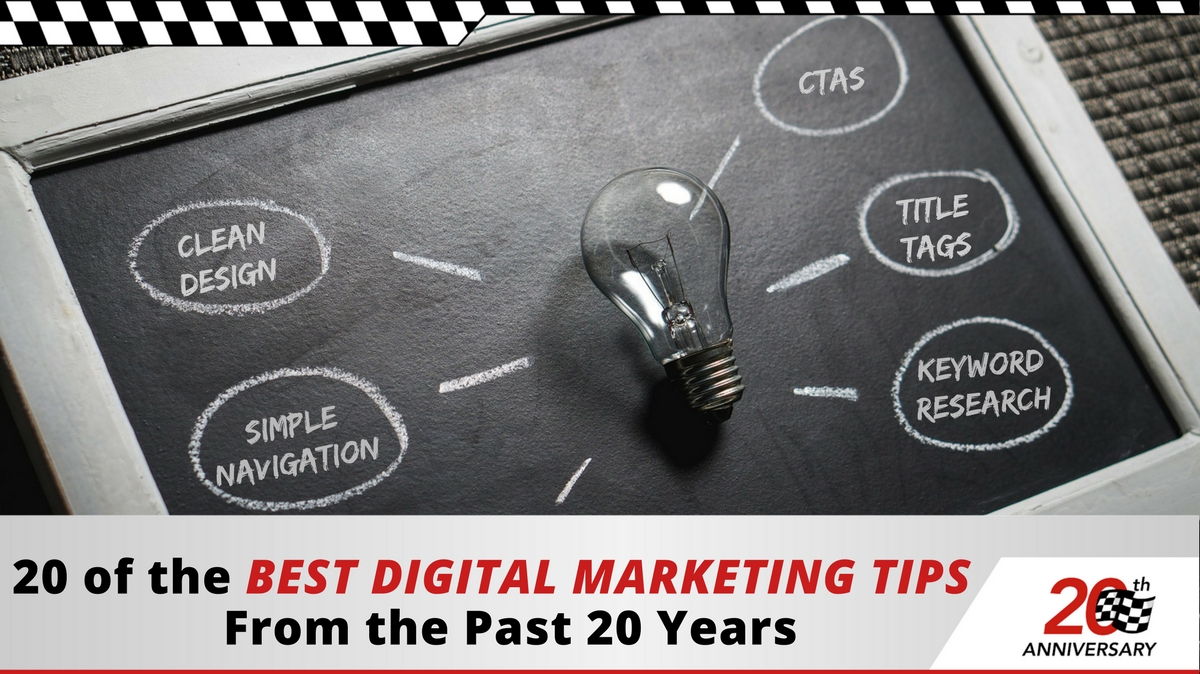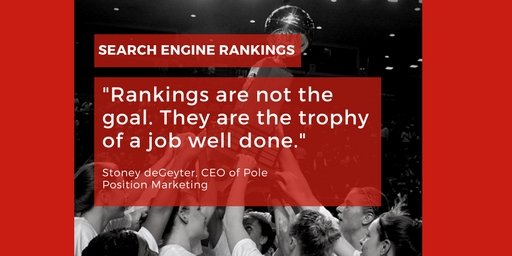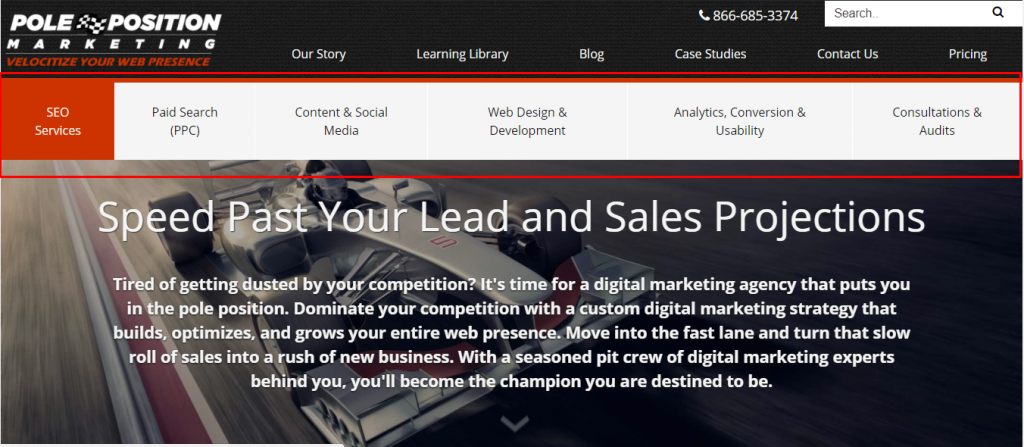
I’ve been collecting digital marketing tips for as long as I’ve been a digital marketer–20 years! Readers of my book, The Best Damn Web Marketing Checklist, Period!, will be familiar with most of them as anything that is currently relevant ended up there.
Continuing on with our 20-year anniversary series of posts, I thought it would be fun to put together a list of the 20 top digital marketing tips I’ve learned over the years. If you haven’t read the book, think of this as its greatest hits!
Design & Architecture
- Clean/professional design – Your website is the first impression you give to your visitors. For many, this is the only “office” or “storefront” you’ll ever have. So make it a good one. Your website should be one of the top sites in your industry.
- Contact options – Provide visitors multiple options for getting in touch. Many shoppers just need the security to know that someone is available should a problem arise. It’s a small, but critical, provision of confidence.

With a plethora of contact options, Southwest ensures that customers will find the one they’re most comfortable with. - Trust verifications – Provide multiple 3rd party trust symbols, such as site security certificates, local and industry organizations you belong to, awards, and, of course, testimonials.
- Site speed – Keep your site moving fast. Speed is an important issue in the algorithms and only getting more vital. As of July 2018, Google is using speed as a ranking factor for mobile searches. If your site is in the lower 50% of sites in your industry in terms of speed, you need to improve.
- Analytics – Install analytics tracking software. Even if you’re not regularly using analytics, you’ll want to have the data for when the day comes that you need it.
On-page optimization
- Keyword research – Yes, keyword research is still important. Not just for optimizing content but for understanding what your audience is interested in. Use this information to outline your site and create valuable content.
- Title tags – Still one of the most important aspects of on-page optimization. Not only does the title tag help with search performance, but more importantly, it is a primary driver of clicks to your site from the search results. As you can see below, it is the clickable link in search results. Make it so compelling that searchers mouses are drawn to it.

- Topical optimization – Keywords still matter in content, but it’s more important to use keywords to flesh out the topics of content. The keywords simply tell you what people want and need to know about the topic, giving you a direction for satisfying their needs within your content.
- Calls-to-action – Every page has a purpose. It’s your job to outline that purpose and then give your readers the opportunity to take the action needed to fulfill it. Without a call-to-action, how will your visitors know what to do?
- Optimize images – Utilize alt attributes for all images on your site. Use the highest quality image possible while keeping the file size the lowest possible.
- Write for your audience, not search engines – All said and done, search engines are not your customers. They are just there to reward you for a job well done in appealing to your primary audience. Focus on the audience and win the search engines later.

Mobile optimization
- Mobile responsive or amp site – Your website absolutely, positively MUST be mobile friendly. If it’s not, trouble is a-brewin’!
- Mobile usability – Aside from having a site that looks good on mobile, it must also be usable. Navigation, links, and content must all be tailored to the mobile audience.
Navigation
- Customer-focused navigation – Your visitors should know what you offer by looking at your navigation alone. Your primary product categories and services should be prominently displayed.

- Keep options tidy – Don’t overcomplicate your navigation by providing too many options. Five to seven is a good number for primary navigation, and the sub-options should be kept to one category at a time.
- Breadcrumbs – Search engines often use breadcrumb when providing the URL in the search results. This can be a powerful indicator of a page’s content both on and off-site.
Forms
- Keep forms simple – Don’t force visitors to fill out more information than is absolutely necessary. Keep them short and simple. The less information required, the greater number of form fills you’ll get.
- Flexible field entry – When data can be entered in multiple formats, be sure your forms accept them all. There is nothing worse than getting kicked back when the information is correct, just not in the “correct” format.
- Preserve entered data – When a form is submitted with invalid information, always preserve the other information entered. This is especially necessary with long forms, but it’s good for short forms as well.
Off-page optimization
- Build authority – All the optimization in the world won’t get you the results you want if you don’t take the time to build authority. This is done through links, social media, and quality content.
More Where This Came From
If you’re just looking for a place to start, these 20 tips will keep you busy for a while. When you’re ready for more digital marketing tips and checklists, you’ll want to check The Best Damn Web Marketing Checklist, Period! 2.0.

2 Responses to 20 of the Best Digital Marketing Tips From the Past 20 Years